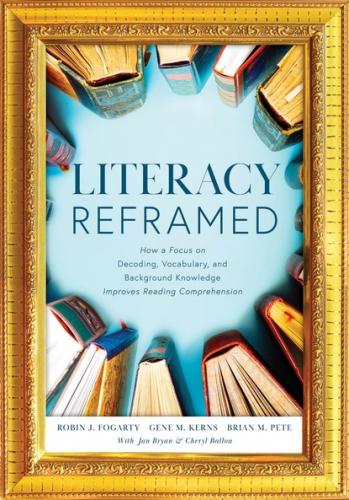When Mr. Ellington repeated, “You know more than you think you know. Your brain is smarter than you,” these sixth-grade students knew to think again, to search for connections that made sense of the content they were reading. In fact, Mr. Ellington actually heard students saying under their breath, “I know; I know more than I know I know.” This behavior was more obvious when they deciphered an optical illusion or discerned the patterns in a tessellation or laughed aloud at a cartoon image that seemed hilarious the instant it registered on the brain. It was clear when they finally had that break, that rare aha moment, that they knew he was right.
A truth to take away: It’s important and intelligent to know what we know and what we don’t know.
Chapter 4: Digital Reading
What could be better, in a world of information amid misinformation, than a digital reader in your back pocket?
This story is our ode to the technology advancement that allows us to revisit and refresh the background knowledge stored in our brain. It’s called the computer; whether a tiny handheld device, a tablet, or a desktop processor, it’s a ready, fast backup like an ever-ready battery.
Mr. Hass’s seventh-grade students were digital-savvy readers, each with a smartphone near at hand. Rather than having to go to the dictionary in the corner or yell out, “What’s a thesaurus?” these students had a background knowledge center with them at all times. He coached, “When you’re stumped, think in your head first to see if you can recover any ideas. If not, then ask your partner, and finally, dig out the digital wizard and search with Siri or google it to find the answer on your own.”
One’s body of knowledge is enhanced by background experiences and prior understanding. When a chunk of knowledge is missing, the brain searches for a connection. Teachers who understand the power of knowledge-driven reading understandably value the use of a digital device.
Along the way, we will explore some closely related ideas such as the emerging requirements around assisting dyslexic students sooner, the impact of transitioning to digital texts, and the potential for literacy acquisition to support the acquisition of social-emotional skills.
The topic of literacy is highly charged, with skirmishes from the so-called reading wars somehow still persisting. We have tried to fully substantiate each claim herein with solid research, rather than any particular philosophy or preference. In doing this, we respectfully interpret the work of Mike Schmoker, Daniel T. Willingham, Stanislas Dehaene, E. D. Hirsch Jr., and other respected voices in the field of literacy instruction, including Isabel Beck, Rick Stiggins, Doug Lemov, and more. They have powerful insights to share, and based on long-term performance metrics, we are eager for some new thinking about how to best teach literacy, and even more eager to put the innovations into practice.
As the famous lyricist Oscar Hammerstein II suggests, “Let’s start at the very beginning / A very good place to start” (Rodgers & Hammerstein, 1965). His lyrical start was for learning to sing in The Sound of Music. Let us begin with the sound of literacy.
Конец ознакомительного фрагмента.
Текст предоставлен ООО «ЛитРес».
Прочитайте эту книгу целиком, купив полную легальную версию на ЛитРес.
Безопасно оплатить книгу можно банковской картой Visa, MasterCard, Maestro, со счета мобильного телефона, с платежного терминала, в салоне МТС или Связной, через PayPal, WebMoney, Яндекс.Деньги, QIWI Кошелек, бонусными картами или другим удобным Вам способом.
